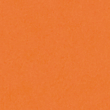Green Company Spotlight
- By Andrew Jacobs
- Apr 2, 2014
Green Company Spotlight
[caption id="attachment_7248" align="aligncenter" width="520"] Japanese Architect, Shigeru Ban[/caption]
Japanese Architect, Shigeru Ban[/caption]
You've heard of paper being used to create artsy projects or even cool recycling methods but the latest Pritzker Architecture Prize winner, Shigeru Ban’s, use of paper has taken recycled art to a whole other level. Shigeru Ban Architects has received so much praise for its social responsibility, Jam Paper couldn't resist giving them some shine!
The architect designs temporary shelters, churches, and schools with paper tubes and plastic beer crates as a solution to natural disasters. His appreciation for paper tubes developed shortly after he graduated from college in the 1980’s. He sought a wood replacement and cardboard paper tubes seemed to do the trick!
He prefers to use paper tubes over other building materials because it is inexpensive and the prices do not rise after natural calamities. Since paper tubes are light they do not require massive equipment to transport them making them highly beneficial. His disaster relief temporary buildings were intended to be-- well temporary. It was to ensure people had somewhere to stay between the time they had lost their homes and were able to get back on their feet. However people loved some of his buildings so much they decided to continue to use them today. Check out some of Ban’s buildings for displaced people and evacuees.
Paper Log Houses

Shigeru Ban’s paper log houses were built in Japan in 1995. They were made with paper tubes and tent material for roofs.
School

In 2008, the Hualin Temporary Elementary School was built in China by one hundred and twenty volunteers. It was rebuilt after the Sichuan earthquake with paper tubes.
Church

In 2013, Ban created a church in New Zealand after the 2011 Christchurch earthquake. The church was made of paper tubes, timber, and steel.
Though Shigeru has designed extravagant buildings such as Centre Pompidou-Metz, a museum in France, he cares deeply about the less fortunate and makes it his responsibility to provide them with shelter. A huge reason why many other architects do not build temporary housing for evacuees and the homeless is because they are occupied with building for the wealthy.
Jam Paper admires Ban for being the ultimate humanitarian. He devotes his time to give people respectable places to lay their heads and pursue their everyday lives. Ban believes everyone can do a better job at lending a helping hand. It is amazing all that can be done with recycled materials. It can save you trips to the grocery store or provide a home for thousands of people!
Shigeru Ban's Grand Use of Paper Tubes: A Green Company Spotlight
Shigeru Ban, a renowned Japanese architect, is known for his innovative and sustainable use of paper tubes in his architectural designs. His commitment to environmentally friendly practices has earned him the spotlight as a green company. Ban's use of paper tubes as a building material not only showcases his creativity but also highlights the potential of sustainable and recyclable materials in construction. This approach aligns with the growing global emphasis on eco-friendly and sustainable practices, making Ban's work a source of inspiration for architects, environmentalists, and individuals interested in sustainable living.
The Benefits of Using Paper Tubes in Architecture
Using paper tubes in architecture offers numerous benefits, including sustainability, cost-effectiveness, and versatility. Paper tubes are lightweight, making them easy to transport and handle during construction. Additionally, they are recyclable and biodegradable, reducing the environmental impact of construction projects. Furthermore, paper tubes can be used in various architectural applications, from temporary structures to permanent buildings, showcasing their versatility and adaptability.
Use Cases for Paper Tubes in Architecture
Paper tubes have been used in a wide range of architectural projects, including pavilions, shelters, and even permanent residential and commercial buildings. Their use in disaster relief efforts has also demonstrated their practicality and effectiveness in providing quick and sustainable solutions in emergency situations. Architects and designers continue to explore new and innovative ways to incorporate paper tubes into their projects, further expanding the use cases for this eco-friendly building material.
Alternatives to Paper Tubes in Construction
While paper tubes offer unique advantages, there are alternative materials that can be used in construction, such as bamboo, recycled plastic, and sustainable wood products. Each material has its own set of benefits and considerations, and the choice often depends on the specific requirements of the project, as well as the architect's design vision and sustainability goals.
Tips for Using Paper Tubes in Architectural Design
When incorporating paper tubes into architectural designs, it is essential to consider factors such as structural integrity, weather resistance, and long-term durability. Proper sealing and treatment of the paper tubes can enhance their performance and longevity, ensuring that they meet the necessary building standards and regulations. Additionally, collaborating with experienced suppliers and manufacturers can provide valuable insights and support for successful integration of paper tubes in architectural projects.
Exploring the Future of Sustainable Architecture
Shigeru Ban's pioneering use of paper tubes in architecture serves as a testament to the potential of sustainable and eco-friendly building materials. As the demand for environmentally conscious design continues to grow, architects and designers are increasingly exploring innovative solutions that prioritize sustainability without compromising creativity and functionality. The ongoing evolution of sustainable architecture promises to shape the future of the built environment, offering new possibilities for environmentally responsible and visually striking structures.
















